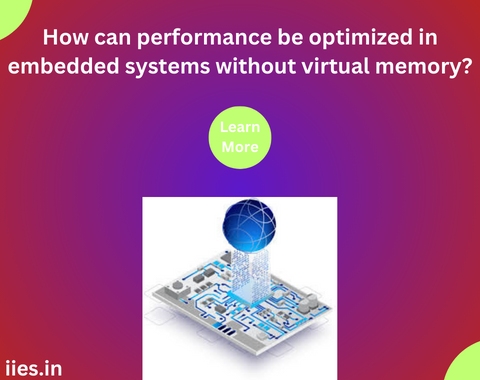It allows the operating system to allocate a portion of the hard disk as an extension of the RAM, providing a larger address space for running applications. However, the implementation of virtual memory in embedded systems is often constrained due to factors such as limited resources, power consumption concerns, and real-time requirements.
Limitation 1: Restricted Address Space:
One of the primary drawbacks of embedded systems without virtual memory is the restricted address space. Unlike general-purpose computers, embedded systems often have minimal memory resources. The absence of virtual memory limits the addressable space available for both the operating system and applications. This constraint can hinder the development and execution of complex software, especially in scenarios where large datasets need to be processed.
Limitation 2: Inflexibility in Application Development:
The absence of virtual memory imposes challenges on application developers, restricting the flexibility in designing software. Without the ability to leverage virtual memory, developers must carefully manage the available physical memory, leading to constraints on the size and complexity of applications. This limitation becomes particularly pronounced when dealing with applications that require dynamic memory allocation and deal with varying data sizes.
Limitation 3: Increased Risk of Memory Overflow:
Embedded systems are often employed in safety-critical applications where precise timing and reliable operation are paramount. Without the safety net provided by virtual memory, the risk of memory overflow becomes a significant concern. In scenarios where an application exceeds the available physical memory, unpredictable behavior, crashes, or system failures may occur. This is especially problematic in applications where failure could have severe consequences, such as in medical devices or automotive systems.
Limitation 4: Limited Support for Multi-Tasking:
Embedded systems are frequently tasked with handling multiple functions simultaneously. However, the absence of virtual memory makes multitasking more challenging. Each task must contend with the finite physical memory available, and excessive memory usage by one task can impact the performance of others. This limitation can compromise the real-time responsiveness of the system, a critical requirement in applications like robotics, where timely execution is crucial.
Limitation 5: Hindrance to Software Maintenance:
Embedded systems often have long lifecycles and may be deployed in environments where updates are challenging. The absence of virtual memory complicates software maintenance, making it harder to adapt applications to changing requirements or fix issues post-deployment. Software updates that require modifications to memory allocation may be particularly cumbersome, potentially necessitating hardware changes.
Limitation 6: Increased Sensitivity to External Interference:
Embedded systems are frequently utilized in environments where they may be exposed to external interference, such as electromagnetic interference (EMI) or power fluctuations. Without virtual memory protection, these systems are more susceptible to corruption of critical data in memory, leading to potential malfunctions or system crashes. This sensitivity becomes a significant concern in applications where reliability is paramount, such as in aerospace or medical equipment.
Limitation 7: Hindrance to Resource Efficiency:
Embedded systems are often deployed in resource-constrained environments, where power consumption and hardware limitations are critical considerations. Without virtual memory, optimizing the utilization of available resources becomes more challenging. Efficient management of memory becomes crucial, and developers must carefully balance the need for performance with the constraints imposed by limited physical memory. This limitation can hinder the development of energy-efficient and resource-conscious embedded systems.
Potential Solution: Advanced Memory Management Techniques
To address the challenge of resource efficiency, developers can employ advanced memory management techniques tailored for embedded systems. Techniques such as static memory allocation, memory pools, and stack usage analysis can help optimize resource utilization and mitigate the limitations imposed by the absence of virtual memory.
Limitation 8: Complexity in Real-Time Systems:
Real-time embedded systems demand precise timing and predictable execution to meet stringent deadlines. The absence of virtual memory introduces complexity in managing memory dynamically without compromising real-time performance. In scenarios where deterministic behavior is crucial, such as in control systems or automation, the lack of virtual memory can limit the system’s ability to adapt dynamically to changing conditions.
Potential Solution: Real-Time Operating Systems (RTOS)
In addressing the complexity of real-time systems without virtual memory, the use of Real-Time Operating Systems (RTOS) becomes paramount. RTOS provides mechanisms for deterministic task scheduling, priority management, and resource allocation, enhancing the predictability of system behavior.

